The Reeds almanac defined our wakeup time on Friday morning. So we cast off the lines already before 7 in the morning and left during the high tide towards the island of Helgoland. Andrus planned our route in a way that we should arrive in Helgoland by only making two tacks. North wind was blowing the whole way with 22 to 25 knot speed and the waves were starting to build up.
On the deck and in salon the waves feel less uncomfortable than in other, lower parts of the boat. For example during the cooking time it swings a lot more in the pentry. Especially if we are on the left tack I need to be very careful because our kitchen is located on the port side of the boat. Otherwise I’ll soon end up sliding to the starboard side. On this leg I used for the first time the pentry’s safety line. It was so much easier to lean on the line while chopping vegetables with the knife in hand. The galley safety line and I became friends right away.
Helgoland consists of two islands: the main island (Hauptinsel) and Dune (Düne). Pleasure boats are not allowed to go to Düne and the guest harbour is on the southern side of the Helgoland’s main island. The harbour is rather small and during the high season boats are rafted up. The pontoons even have marks with green and red arrows on where to build the rafts. This way there will be sufficient space between the rafts for the mooring lines of all boats. So early on this season only a few boats were in a second row. However at best there can be almost a ten boats rafted up.
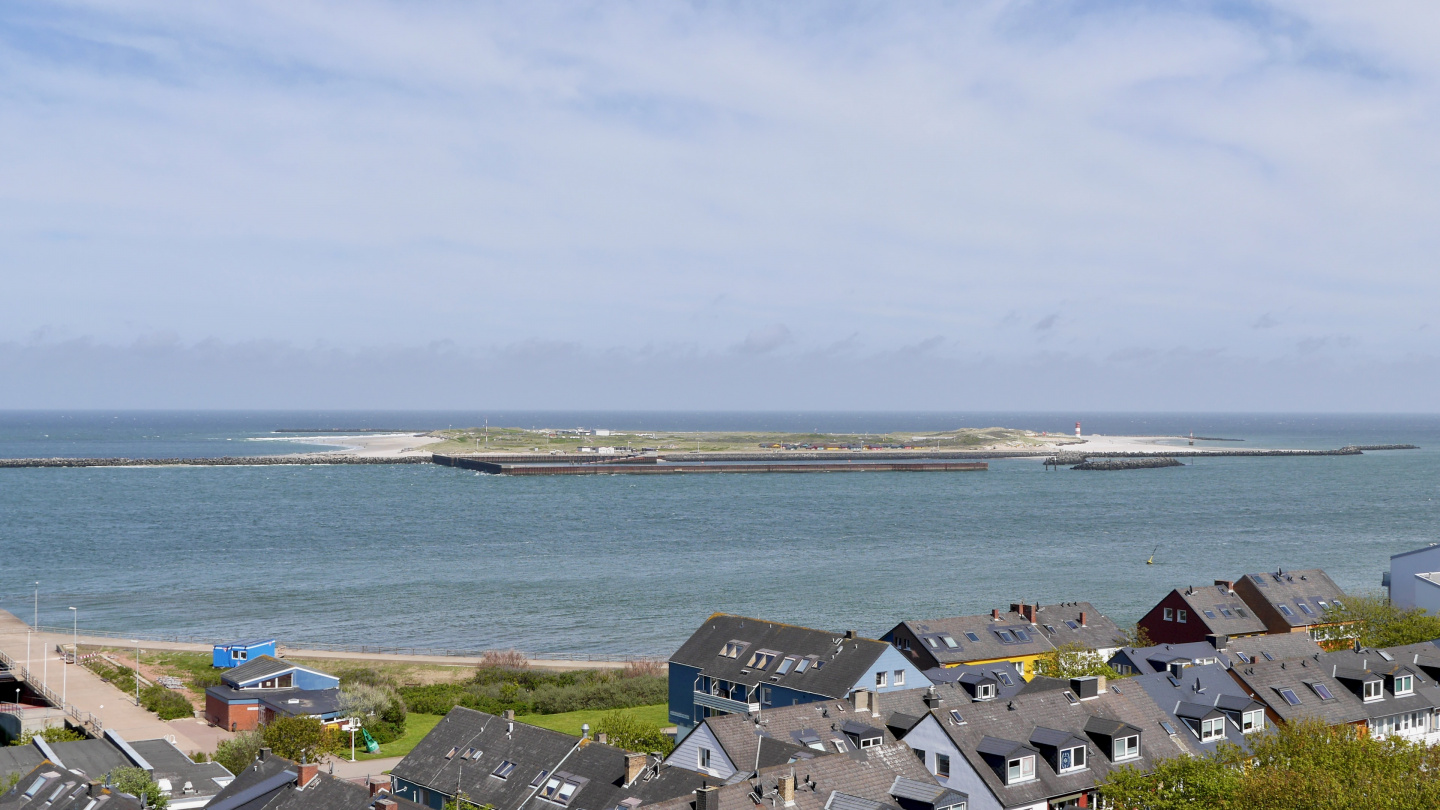
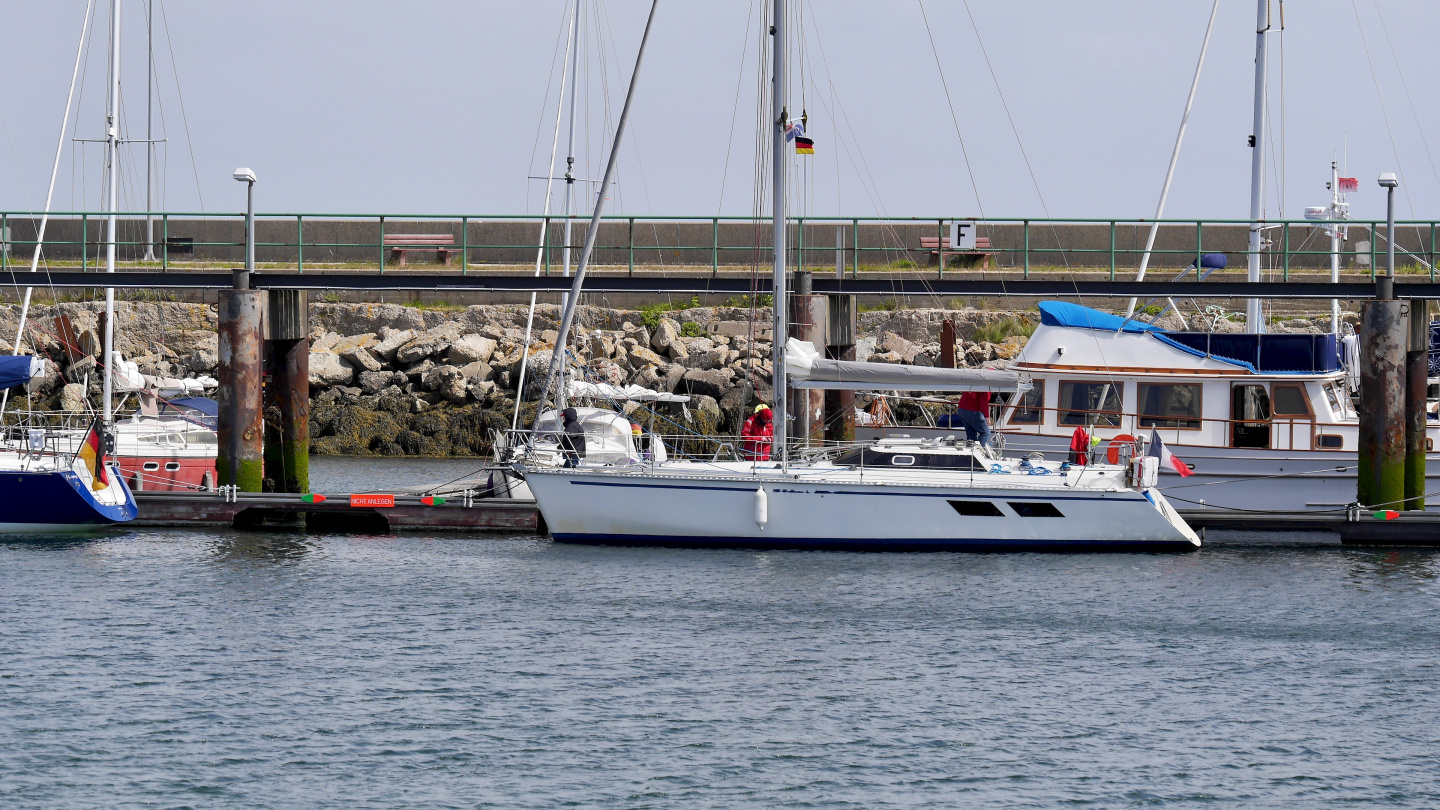
It was a pleasure to step into the harbour office when harbourmaster welcomed Suwena from Finland by name. He had AIS receiver and huge binoculars to follow the boats in the harbour.
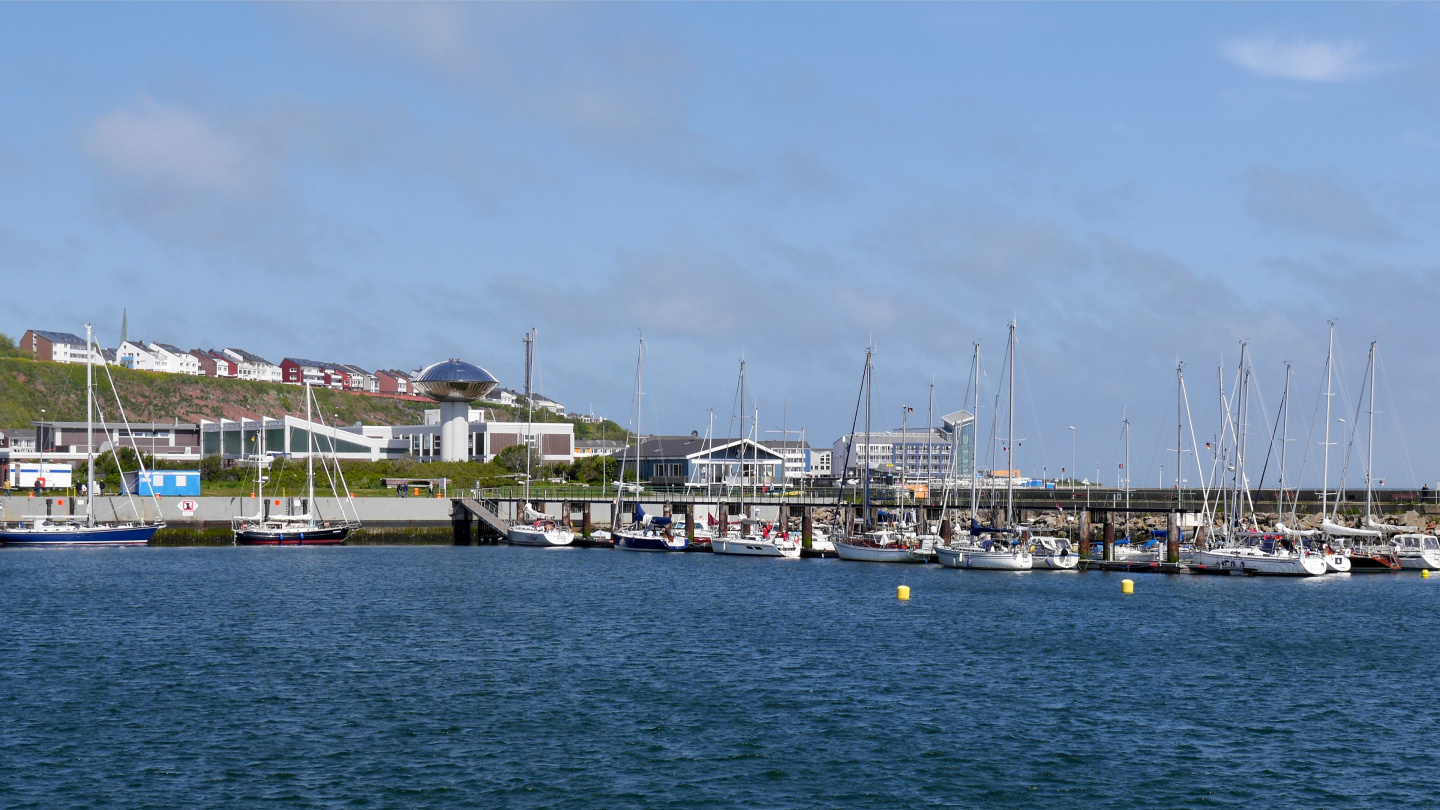
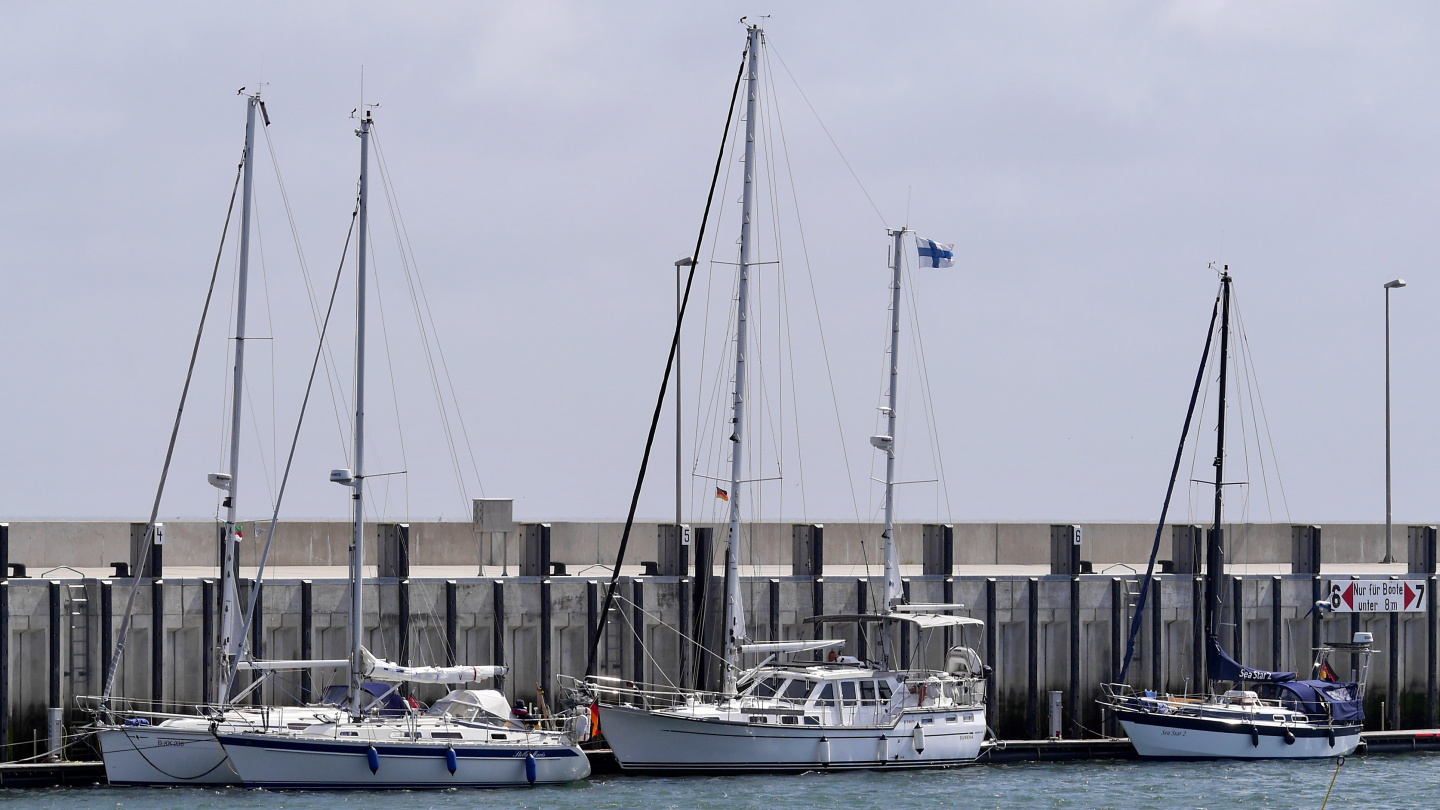
Helgoland is the only offshore island of Germany. Its speciality is that it does not belong to the EU VAT area. Thus the tourism is based quite a lot on tax-free sales. Most clearly it can be seen in the price of alcohol and diesel. More stronger the booze is, the cheaper it seemed to be. Unusual was also that the diesel price per litre was lower the more you bought. We were smiling happily after filling 770 litres of white diesel with the price of 1.02 €/l. Compare that to the 1.80 €/l in Kappeln on the Baltic Sea. After that I must to ask from Andrus what shall we do with all that extra savings? The fuel dock is in the another harbour called Binnenhafen. The web page of the fuel station recommended refuelling while arriving. Because of the tide everybody tends to leave at the same time.
On the other hand the fresh water is a different story. It is worthwhile to top up the water tanks before coming to Helgoland. The water on the island is desalinated from sea water and supply is limited. It is understandable that there are no water taps on the pontoons. Otherwise every boat that has sailed on salty North Sea would be rinsed with fresh water. Our Suwena was so covered with salt that wherever you touched on the deck the fingers became salty immediately. There is a water point in the harbour but that means moving the boat. We do not have any idea, does the water cost separately.
The tourism in Helgoland is based on ship cruises. Every day ships are carrying from Germany and Denmark tourists to Helgoland. They stay for one night and return on the ship next day. Every afternoon the streets are full of people pulling their luggage when some arrive and others leave the island.
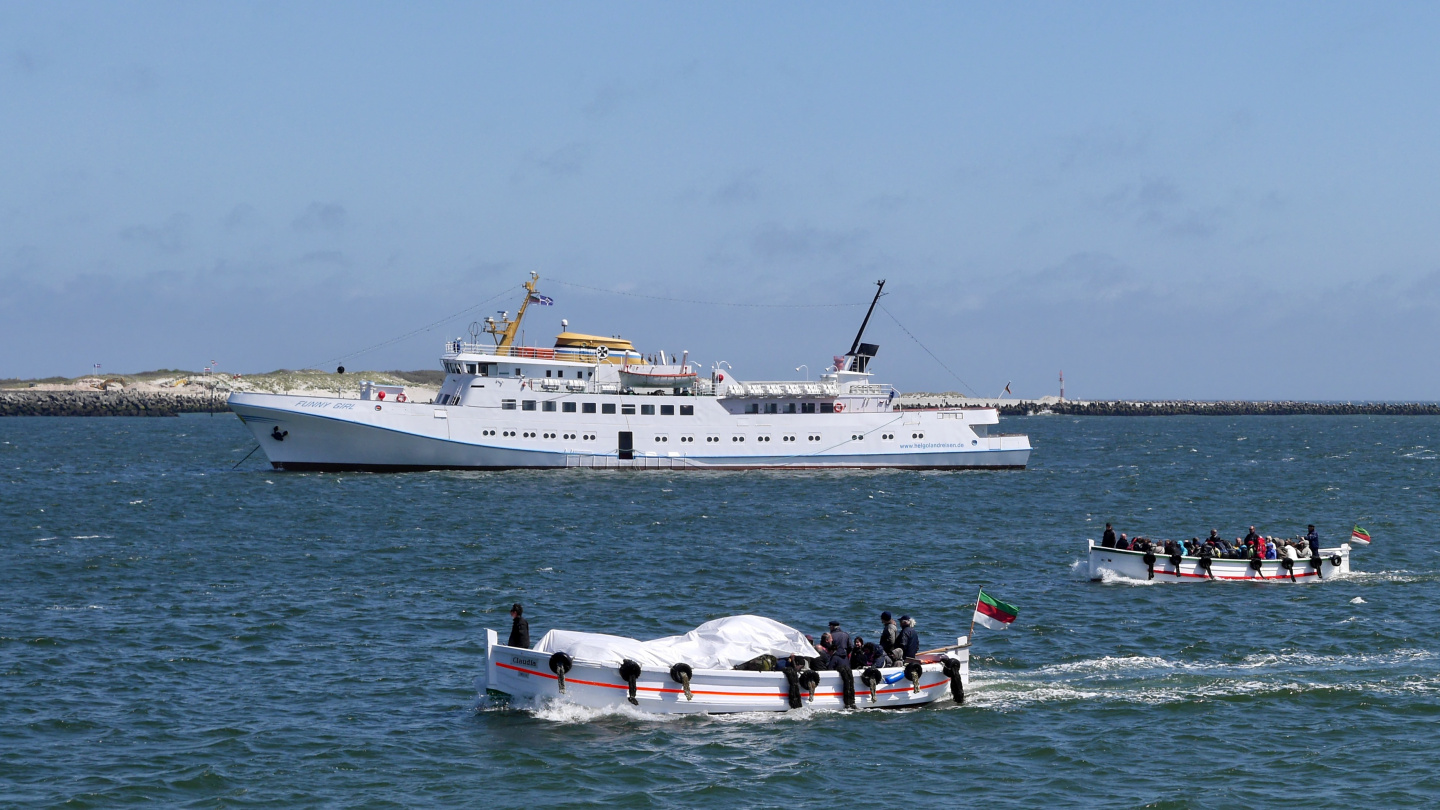
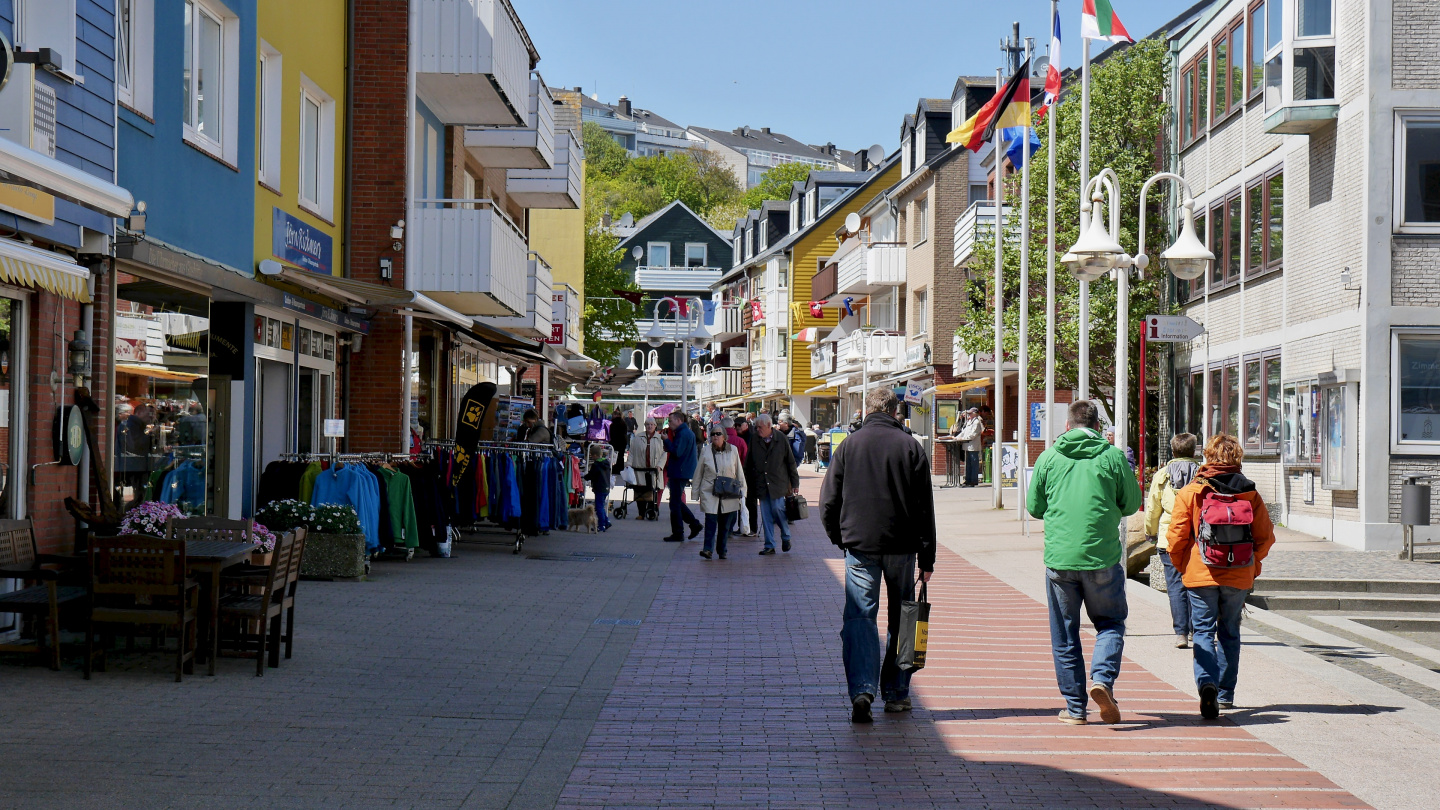
At the beginning the island feels like a typical tourist trap. However after staying there for several days and exploring it more deeply, the island became more attractive. The town is built in two layers. The height difference between the highland (Oberland) and the lowland (Unterland) is 50 metres. Unfortunately in a south-west corner there is also a mid-land (Mittelland) because the British made practice bombings after the second world war and as a consequence to this the part of the highland collapsed.
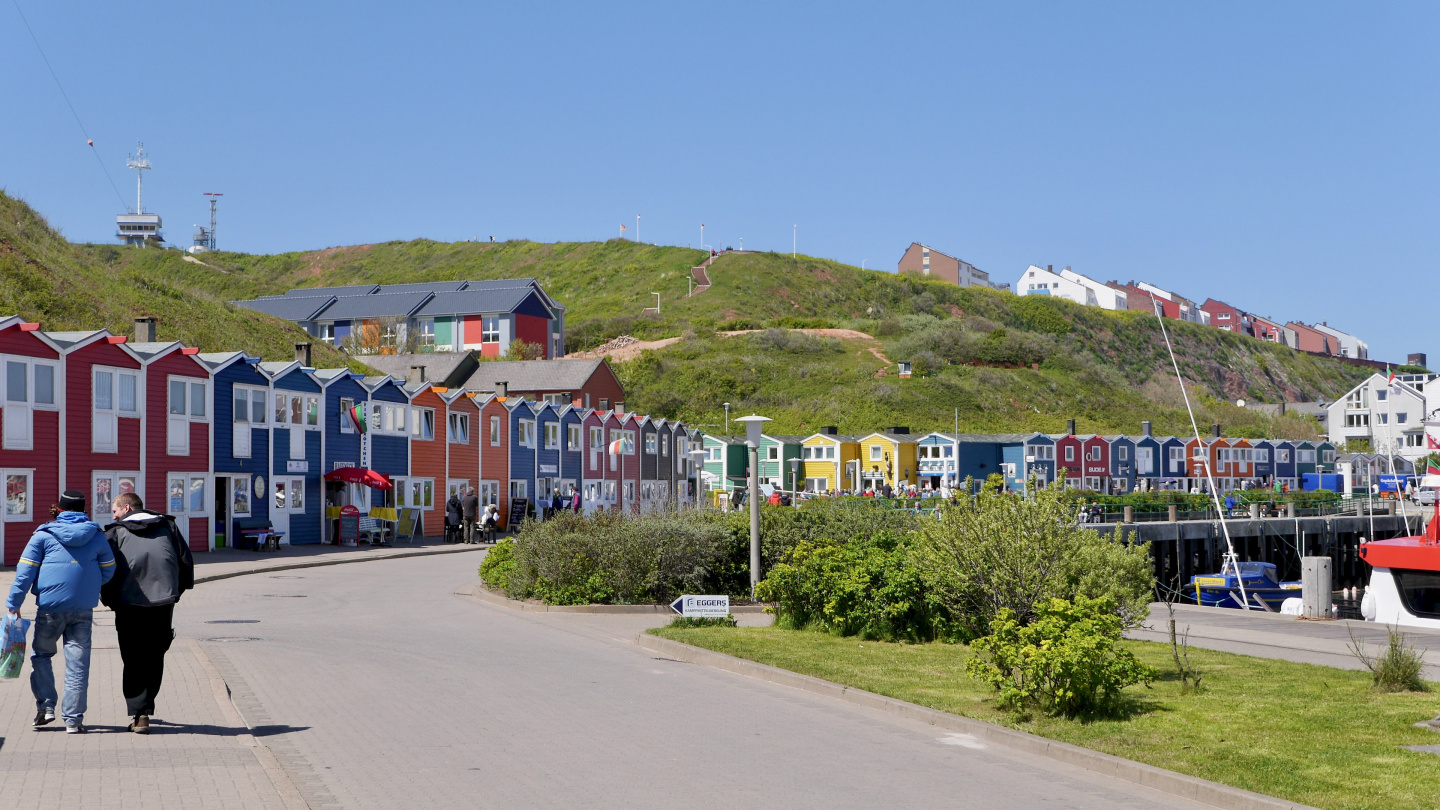
From the lowland it is a decent exercise of stair climbing to the highland, a total of 184 steps. Alternatively there is also an elevator. There is a 3.5 kilometre long walking path around the island. As we approached the north-west corner of the island we started to hear a huge chorus of birds. On the sandstone shore of Helgoland nests for example the Northern Gannet (basstölpel) whose gurgling sound was really amazing. For bird watchers there are a plenty to explore as there live over 400 different bird species on the island. Especially as we could follow the birds from a range of only a couple of metres while the birds glided almost stationarily in fresh north breeze. The birds are nesting on almost vertical walls and on a 47m tall Lange Anna sandstone stack.
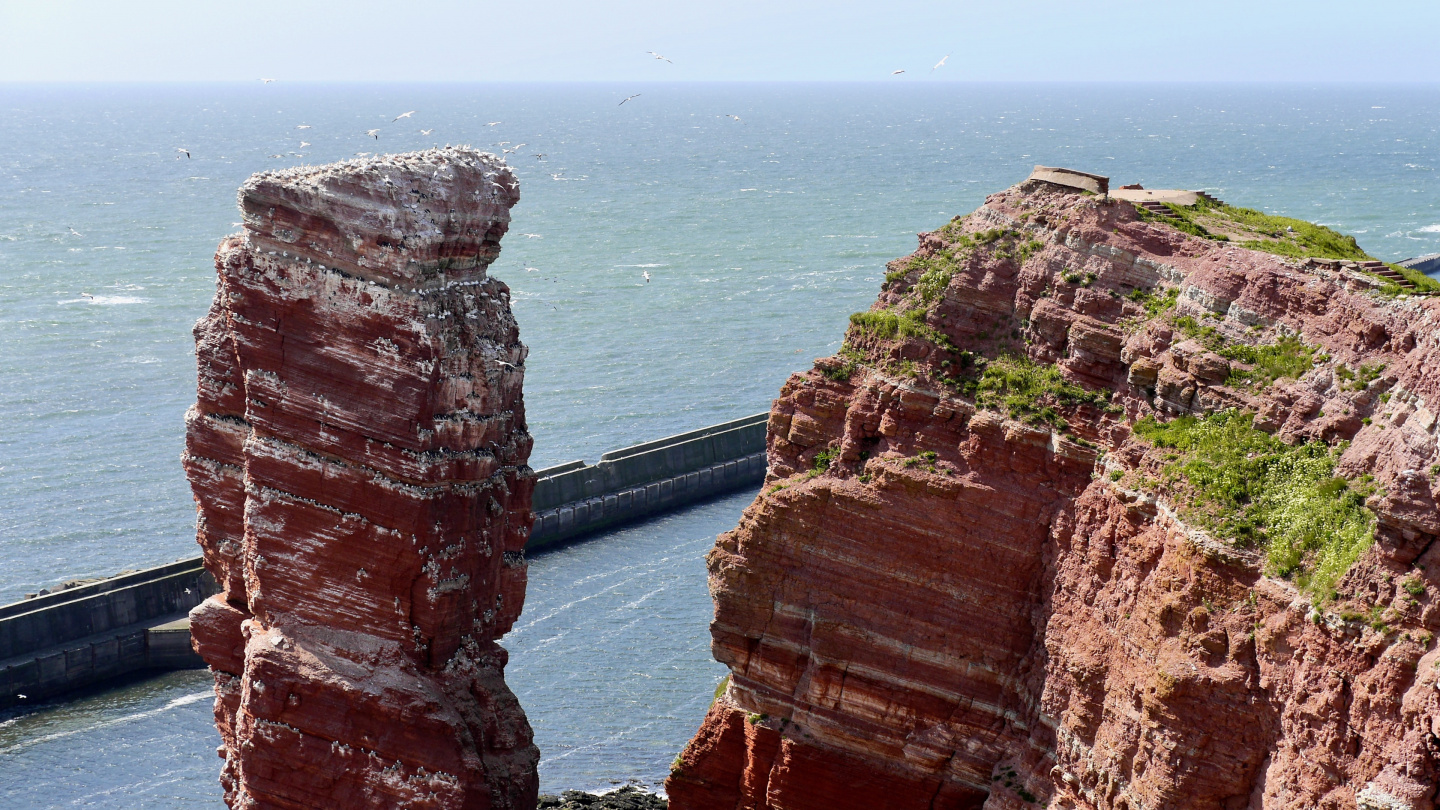
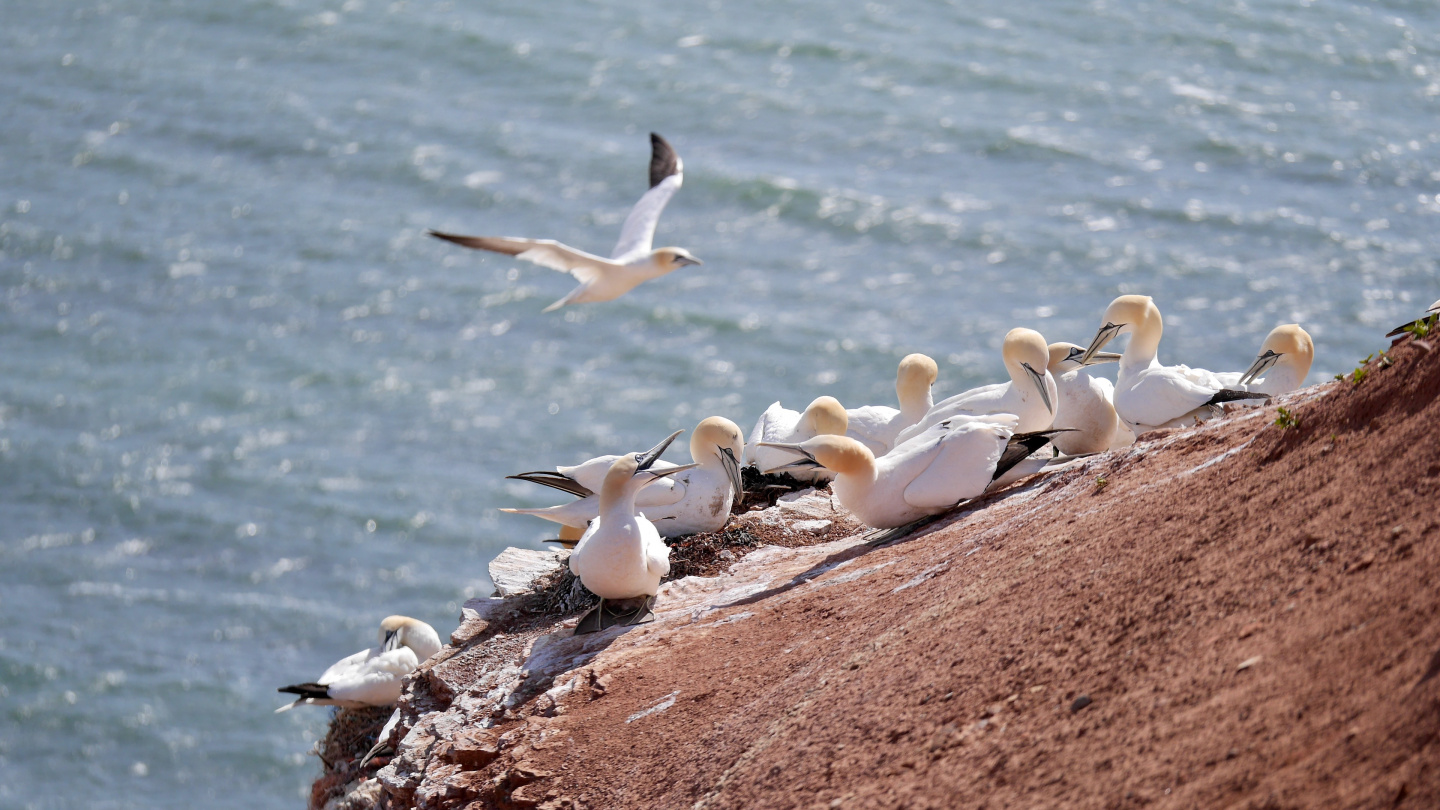
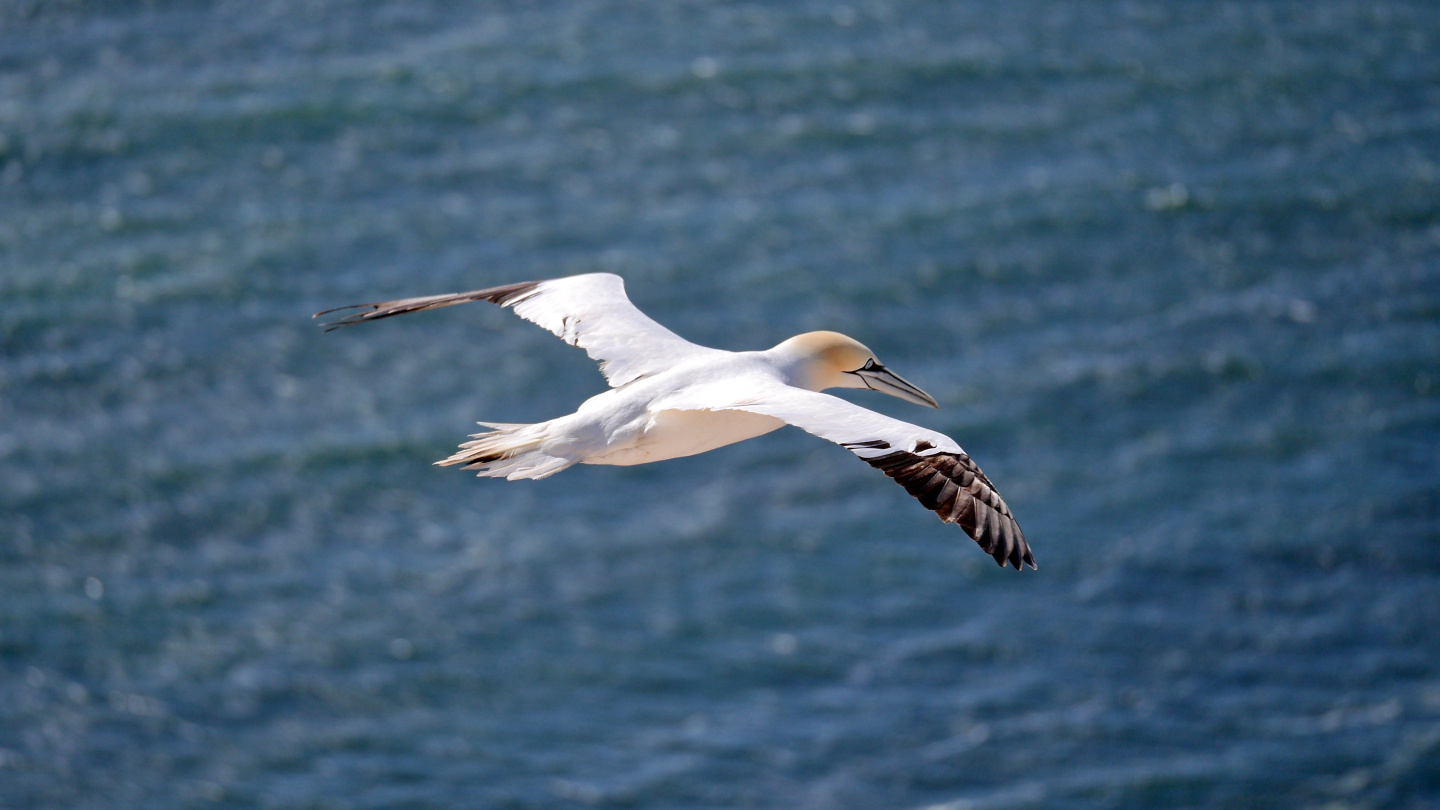
Helgoland advertises itself about a clean air. Both the cars and the bicycles are forbidden on the island. Only the ambulance and a few working machines have a special permits. Also only the police alone can use a bicycle on the island of Helgoland.
We increased the effect of fresh air by going swimming into the Helgoland Spa. The spa has a outside pool with salty North Sea water. The experience was staggering as the cold wind was still blowing over 20 knots from the north. The water heated to 28 degrees was cosy until you lifted head or toe just a little. There was a quick reflex to immerse back into the warm water. In German style there were quite a many people and they were more about floating than swimming, but definitely it was fun. Finally the wind drove us inside before the head froze completely.
There was also Rumbalotte, flying a Finnish flag in the same pontoon with Suwena. Ulla and Mike were on their way back to home harbour of Espoo from a six year long cruise around the Europe. Their route choice was very interesting and there was a plenty to talk about it. It is interesting how a common hobby brings strangers together and people get to know each other in a moment. Mike and Ulla also write a blog about their boat cruise mainly in German and a little in Finnish.


Howdy U2,
Howdy U2,
It has been fascinating reading about your visits to various parts of Germany.
My late father Hans-Joachim was born and grew up in Rugen where as a youngster he learned to sail and with his friend Heinz became a successful Sharpie racing pair. My grandfather Otto was a quartermaster in the German Navy and was based in Hamburg for most of the war. At the close of the war my grandfather was able to arrange passage on one of the last boats leaving Rugen for my grandmother to Denmark. My father was based on Helgoland for the last 6 months of the war as a naval spotter reporting all enemy aircraft sightings and hoping that none of the bombers he saw dropped their payload on my grandfather’s office in Hamburg.
All three met up after the war and my grandparents lived in Kiel until their passing in 1972(Grandmother) and 1982(Grandfather).
In 1958 my father met my Norwegian mother Cissel in Denmark. In 1959 my father was working in Walvis Bay, Namibia and when he married my mother in early 1960 they moved to Johannesburg, South Africa and I was born there in May 1961.
Thank you again for sharing your dream adventures on SY Suwena.
Fair winds and following seas.
Regards,
Hans-Erik
http://www.thabamanziranch.co.za
Helgoland
Helgoland